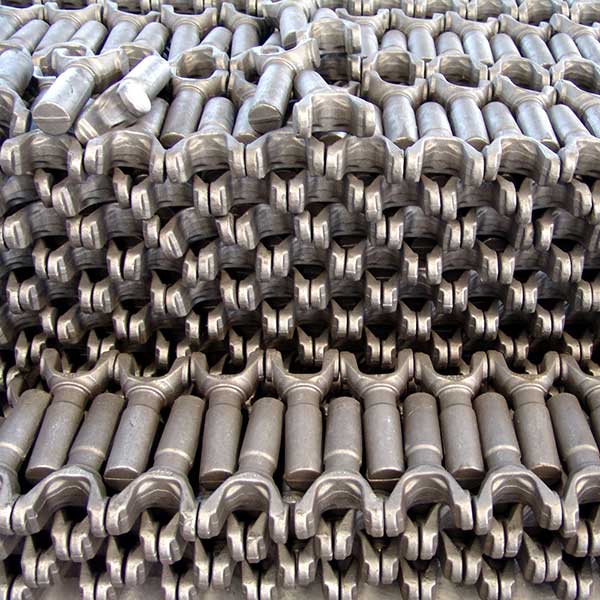
Forging is one of many materials processing methods.
Forging is generally a volume forming process in which a machine part or a blank close to the part size is obtained by transferring and distributing the metal volume. The forged product is called a forging. Forging is mostly carried out under heating. The metal material is formed into a shape by forging, and the desired shape and size can be obtained, and the internal structure thereof can be remarkably improved, and the use performance is improved. Therefore, various parts or components that are subjected to large and complex loads are generally produced by a forging method.
Forging is usually divided into two categories: free forging and die forging.
Free forging is generally performed on free forging equipment using a simple tool to forge metal ingots or blocks into specific shapes and sizes. Free forging is mainly used for single-piece and small-volume production. As the demand for batches increases, the tools used are becoming more complex, resulting in tire die forging. Forging workshops of various types of mechanical repairing factories are mostly produced by free forging and tire die forging. Large forgings (such as large steam turbine rotors and turbines, giant wheels and aircraft engine crankshafts) required to manufacture critical load-bearing parts in heavy-duty machines also require free forging on large hydraulic presses.
Die forging is a forging method suitable for mass production of forgings. In the case of die forging, a forging die having a cavity (mold) having the same or similar shape as the forging is used, the forging die is mounted on the forging machine, the metal blank is placed in the die of the forging die, and the forging machine is passed. The forging die applies a load to the blank to plastically deform the blank, and the deformation flow is controlled by the die space. Die forging is also often introduced into a variety of volume forming methods for the production of forgings, such as extrusion, roll forging, cross rolling, etc. can be included in the scope of die forging.
In addition to high productivity, die forging also has the advantages of accurate shape and size of forgings, high material utilization, more reasonable streamline distribution, high service life of parts, and easy production and operation.


